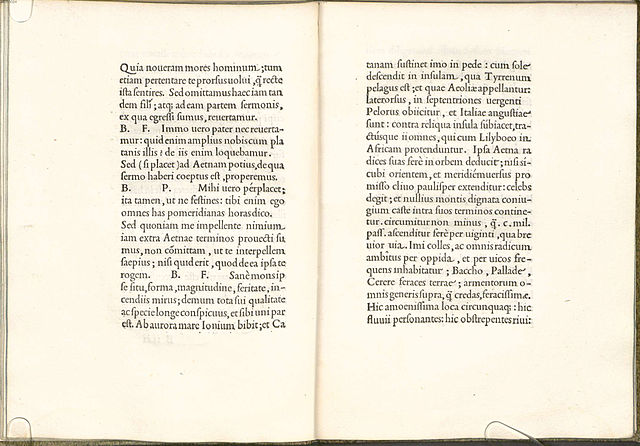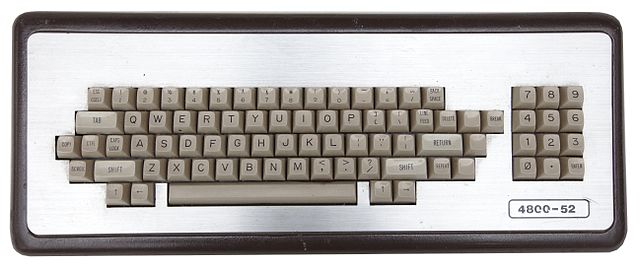The semicolon ; is a symbol commonly used as orthographic punctuation. In the English language, a semicolon is most commonly used to link two independent clauses that are closely related in thought, such as when restating the preceding idea with a different expression. When a semicolon joins two or more ideas in one sentence, those ideas are then given equal rank. Semicolons can also be used in place of commas to separate items in a list, particularly when the elements of the list themselves have embedded commas.
De Ætna. 1496 print by Aldine Press.
A keyboard layout is any specific physical, visual, or functional arrangement of the keys, legends, or key-meaning associations (respectively) of a computer keyboard, mobile phone, or other computer-controlled typographic keyboard.
MIT "space-cadet" keyboard, a pre-ISO/IEC 9995 keyboard with a large number of modifier keys. It was equipped with four keys for bucky bits (Control, Meta, Hyper, and Super); and three shift keys, called "shift", "top", and "front".
4800-52 mainframe / dumb terminal keyboard, c. mid-1980s. There is an obscure configuration of modifier and arrow keys, line feed key, break key, blank keys, and repeat key.
Keyboard of a Letter-Printing Telegraph Set built by Siemens and Halske in Russia c. 1900
A visual layout consisting of both factory-printed symbols and customized stickers





